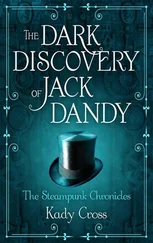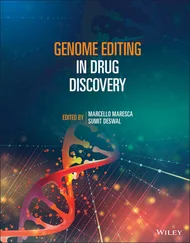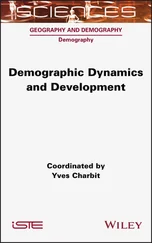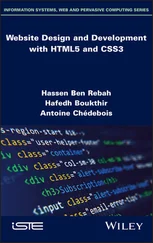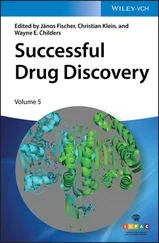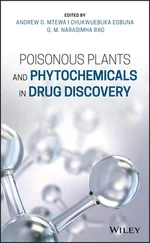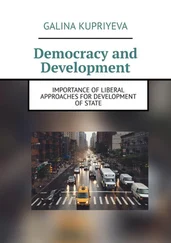Contemporary Accounts in Drug Discovery and Development
Здесь есть возможность читать онлайн «Contemporary Accounts in Drug Discovery and Development» — ознакомительный отрывок электронной книги совершенно бесплатно, а после прочтения отрывка купить полную версию. В некоторых случаях можно слушать аудио, скачать через торрент в формате fb2 и присутствует краткое содержание. Жанр: unrecognised, на английском языке. Описание произведения, (предисловие) а так же отзывы посетителей доступны на портале библиотеки ЛибКат.
- Название:Contemporary Accounts in Drug Discovery and Development
- Автор:
- Жанр:
- Год:неизвестен
- ISBN:нет данных
- Рейтинг книги:4 / 5. Голосов: 1
-
Избранное:Добавить в избранное
- Отзывы:
-
Ваша оценка:
- 80
- 1
- 2
- 3
- 4
- 5
Contemporary Accounts in Drug Discovery and Development: краткое содержание, описание и аннотация
Предлагаем к чтению аннотацию, описание, краткое содержание или предисловие (зависит от того, что написал сам автор книги «Contemporary Accounts in Drug Discovery and Development»). Если вы не нашли необходимую информацию о книге — напишите в комментариях, мы постараемся отыскать её.
A useful guide for medicinal chemists and pharmaceutical scientists Contemporary Accounts in Drug Discovery and Development
Contemporary Accounts in Drug Discovery and Development
Contemporary Accounts in Drug Discovery and Development
Contemporary Accounts in Drug Discovery and Development — читать онлайн ознакомительный отрывок
Ниже представлен текст книги, разбитый по страницам. Система сохранения места последней прочитанной страницы, позволяет с удобством читать онлайн бесплатно книгу «Contemporary Accounts in Drug Discovery and Development», без необходимости каждый раз заново искать на чём Вы остановились. Поставьте закладку, и сможете в любой момент перейти на страницу, на которой закончили чтение.
Интервал:
Закладка:
97 97 Abu‐Elheiga, L., Oh, W., Kordari, P., and Wakil, S.J. (2003). Acetyl‐CoA carboxylase 2 mutant mice are protected against obesity and diabetes induced by high‐fat/high‐carbohydrate diets. Proc. Natl. Acad. Sci. USA 100: 10207–10212.
98 98 Savage, D.B., Choi, C.S., Samuel, V.T. et al. (2006). Reversal of diet‐induced hepatic steatosis and hepatic insulin resistance by antisense oligonucleotide inhibitors of acetyl‐CoA carboxylases 1 and 2. J. Clin. Invest. 116: 817–824.
99 99 Qi, L., Heredia, J.E., Altarejos, J.Y. et al. (2006). TRB3 links the E3 ubiquitin ligase COP1 to lipid metabolism. Science 312: 1763–1766.
100 100 Fullerton, M.D., Galic, S., Marcinko, K. et al. (2013). Single phosphorylation sites in Acc1 and Acc2 regulate lipid homeostasis and the insulin‐sensitizing effects of metformin. Nat. Med. 19: 1649–1654.
101 101 Hoehn, K.L., Turner, N., Swarbrick, M.M. et al. (2010). Acute or chronic upregulation of mitochondrial fatty acid oxidation has no net effect on whole‐body energy expenditure or adiposity. Cell Metab.: 70–76. https://doi.org/10.1016/j.cmet.2009.11.008.
102 102 Olson, D.P., Pulinilkunnil, T., Cline, G.W. et al. (2010). Gene knockout of Acc2 has little effect on body weight, fat mass, or food intake. Proc. Natl. Acad. Sci. USA: 7598–7603. https://doi.org/10.1073/pnas.0913492107.
103 103 Harwood, H.J. Jr., Petras, S.F., Shelly, L.D. et al. (2003). Isozyme‐nonselective N‐substituted bipiperidylcarboxamide acetyl‐CoA carboxylase inhibitors reduce tissue malonyl‐CoA concentrations, inhibit fatty acid synthesis, and increase fatty acid oxidation in cultured cells and in experimental animals. J. Biol. Chem. 278: 37099–37111.
104 104 Tong, L. and Harwood, H.J. Jr. (2006). Acetyl‐coenzyme a carboxylases: versatile targets for drug discovery. J. Cell. Biochem. 99: 1476–1488.
105 105 Corbett, J.W., Freeman‐Cook, K.D., Elliott, R. et al. (2010). Discovery of small molecule isozyme non‐specific inhibitors of mammalian acetyl‐CoA carboxylase 1 and 2. Bioorg. Med. Chem. Lett. 20: 2383–2388.
106 106 Bourbeau, M.P. and Bartberger, M.D. (2015). Recent advances in the development of acetyl‐CoA carboxylase (ACC) inhibitors for the treatment of metabolic disease. J. Med. Chem. 58: 525–536.
107 107 Griffith, D.A., Kung, D.W., Esler, W.P. et al. (2014). Decreasing the rate of metabolic ketone reduction in the discovery of a clinical acetyl‐CoA carboxylase inhibitor for the treatment of diabetes. J. Med. Chem. 57: 10512–10526.
108 108 Glund, S., Schoelch, C., Thomas, L. et al. (2012). Inhibition of acetyl‐CoA carboxylase 2 enhances skeletal muscle fatty acid oxidation and improves whole‐body glucose homeostasis in db/db mice. Diabetologia: 2044–2053. https://doi.org/10.1007/s00125‐012‐2554‐9.
109 109 Tong, L. (2005). Acetyl‐coenzyme a carboxylase: crucial metabolic enzyme and attractive target for drug discovery. Cell. Mol. Life Sci. 62: 1784–1803.
110 110 Zhang, H., Tweel, B., Li, J., and Tong, L. (2004). Crystal structure of the carboxyltransferase domain of acetyl‐coenzyme a carboxylase in complex with CP‐640186. Structure 12: 1683–1691.
111 111 Harriman, G., Greenwood, J., Bhat, S. et al. (2016). Acetyl‐CoA carboxylase inhibition by ND‐630 reduces hepatic steatosis, improves insulin sensitivity, and modulates dyslipidemia in rats. Proc. Natl. Acad. Sci. USA 113: E1796–E1805.
112 112 Abel, R., Mondal, S., Masse, C. et al. (2017). Accelerating drug discovery through tight integration of expert molecular design and predictive scoring. Curr. Opin. Struct. Biol. 43: 38–44.
113 113 Tong, A. (2019). Gilead shores up hope for NASH cocktail with a glimpse at positive proof‐of‐concept data. https://endpts.com/gilead‐shores‐up‐hope‐for‐nash‐cocktail‐with‐a‐glimpse‐at‐proof‐of‐concept‐data(accessed 29 December 2020).
114 114 Golan, D.E. (2008). Principles of Pharmacology: The Pathophysiologic Basis of Drug Therapy. Lippincott Williams & Wilkins.
115 115 Mesa, R.A. (2010). Ruxolitinib, a selective JAK1 and JAK2 inhibitor for the treatment of myeloproliferative neoplasms and psoriasis. IDrugs 13: 394–403.
116 116 Adis Editorial (2010). Tofacitinib. Drugs R. D. 10: 271–284.
117 117 Tuttle, K.R., Brosius, F.C. 3rd, Adler, S.G. et al. (2018). JAK1/JAK2 inhibition by baricitinib in diabetic kidney disease: results from a phase 2 randomized controlled clinical trial. Nephrol. Dial. Transplant. 33: 1950–1959.
118 118 Pardanani, A., Hood, J., Lasho, T. et al. (2007). TG101209, a small molecule JAK2‐selective kinase inhibitor potently inhibits myeloproliferative disorder‐associated JAK2V617F and MPLW515L/K mutations. Leukemia 21: 1658–1668.
119 119 Ishizaki, M., Muromoto, R., Akimoto, T. et al. (2014). Tyk2 is a therapeutic target for psoriasis‐like skin inflammation. Int. Immunol. 26: 257–267.
120 120 Diogo, D., Bastarache, L., Liao, K.P. et al. (2015). TYK2 protein‐coding variants protect against rheumatoid arthritis and autoimmunity, with no evidence of major pleiotropic effects on non‐autoimmune complex traits. PLoS One 10: e0122271.
121 121 Gracey, E., Hromadová, D., Lim, M. et al. (2020). TYK2 inhibition reduces type 3 immunity and modifies disease progression in murine spondyloarthritis. J. Clin. Invest. 130: 1863–1878.
122 122 BioSpace (2020). Nimbus Therapeutics announces $60 million private financing from new investors to advance expanded pipeline. https://www.biospace.com/article/nimbus‐therapeutics‐announces‐60‐million‐private‐financing‐from‐new‐investors‐to‐advance‐expanded‐pipeline(accessed 29 December 2020).
123 123 Hammitzsch, A., Lorenz, G., and Moog, P. (2020). Impact of Janus kinase inhibition on the treatment of axial spondyloarthropathies. Front. Immunol. 11: 591176.
124 124 Associated Press (2020).Nimbus Therapeutics announces $60 million private financing from new investors to advance expanded pipeline. https://apnews.com/press‐release/business‐wire/business‐corporate‐news‐massachusetts‐drug‐trials‐products‐and‐services‐e3c360003ea74eec9f626a3e82790b86(accessed 29 December 2020).
125 125 Mortier, J., Friberg, A., Badock, V. et al. (2020). Computationally empowered workflow identifies novel covalent allosteric binders for KRAS. ChemMedChem 15: 827–832.
126 126 Conti, M. (2000). Phosphodiesterases and cyclic nucleotide signaling in endocrine cells. Mol. Endocrinol.: 1317–1327. https://doi.org/10.1210/mend.14.9.0534.
127 127 Maurice, D.H., Ke, H., Ahmad, F. et al. (2014). Advances in targeting cyclic nucleotide phosphodiesterases. Nat. Rev. Drug Discov. 13: 290–314.
128 128 Gomez, L. and Guy, B.J. (2013). PDE2 inhibition: potential for the treatment of cognitive disorders. Bioorg. Med. Chem. Lett.: 6522–6527. https://doi.org/10.1016/j.bmcl.2013.10.014.
129 129 Wu, Y., Li, Z., Huang, Y.‐Y. et al. (2018). Novel phosphodiesterase inhibitors for cognitive improvement in Alzheimer's disease. J. Med. Chem. 61: 5467–5483.
130 130 Tresadern, G., Velter, I., Trabanco, A.A. et al. (2020). [1,2,4]Triazolo[1,5‐]pyrimidine phosphodiesterase 2A inhibitors: structure and free‐energy perturbation‐guided exploration. J. Med. Chem. 63: 12887–12910.
3 Discovery and Development of the Soluble Guanylate Cyclase Stimulator Vericiguat for the Treatment of Chronic Heart Failure
Markus Follmann, Corina Becker, Lothar Roessig, Peter Sandner, and Johannes‐Peter Stasch
Research & Development, Pharmaceuticals, Bayer AG, Aprather Weg 18a, 42096, Wuppertal, Germany
3.1 Introduction
Despite better therapies, cardiovascular (CV) diseases remain the leading cause of death worldwide. Among them, heart failure (HF) is a leading cause of hospitalization and CV death [1]. More than 63 million people worldwide suffered from HF in 2016 [2], and around 50% of patients with HF die within five years [3]. HF, by definition, is a condition where the heart is unable to pump sufficiently in order to provide adequate blood flow to other organs such as the kidneys and the brain. Overall, it is a complex clinical syndrome caused by cardiac structural abnormalities and/or functional impairments. In general, HF is a chronic, progressive condition associated with significant morbidity and mortality. Main treatments include healthy lifestyle changes, in some cases surgery and implantation of devices to control heart rhythm, and pharmacotherapy. Prescribed drugs for heart failure with reduced ejection fraction (HFrEF) include angiotensin‐converting enzyme inhibitors, angiotensin‐2 receptor blockers (ARBs) or an angiotension receptor neprilysin inhibitor (ARNI), beta blockers, mineralocorticoid receptor antagonists, diuretics, and more recently SGLT‐2 (sodium glucose co‐transporter‐2) inhibitors. However, even with these new entrants and optimal guideline‐directed medical therapy, event rates in HFrEF remain as high as 15% per year of the composite outcome CV death or HF hospitalization in the empagliflozin arm of EMPEROR‐REDUCED [4] and even 38% in patients with HFrEF after a previous event in the placebo group of VICTORIA [5]. Therefore, the unmet need in HF is still high and drugs targeting other pathways involved in disease progression are sought. No less than 1 out of 6 patients suffering from HFrEF develop worsening HF on average 1.5 years following initial HF diagnosis. The high risk for two‐year mortality and recurrent HF hospitalizations in these patients indicates particularly high unmet medical need for novel treatment strategies [1]. Here we present the discovery and development of the soluble guanylate cyclase (sGC) stimulator vericiguat (BAY 1021189; MK‐1242) for the treatment of chronic HF. Data from the phase 3 VICTORIA trial in patients with worsening chronic HF and ejection fraction <45% were published in the New England Journal of Medicine [5, 6]. Vericiguat 10 mg once daily significantly reduced the combined risk of first HF hospitalization or CV death ( Figure 3.1).
Читать дальшеИнтервал:
Закладка:
Похожие книги на «Contemporary Accounts in Drug Discovery and Development»
Представляем Вашему вниманию похожие книги на «Contemporary Accounts in Drug Discovery and Development» списком для выбора. Мы отобрали схожую по названию и смыслу литературу в надежде предоставить читателям больше вариантов отыскать новые, интересные, ещё непрочитанные произведения.
Обсуждение, отзывы о книге «Contemporary Accounts in Drug Discovery and Development» и просто собственные мнения читателей. Оставьте ваши комментарии, напишите, что Вы думаете о произведении, его смысле или главных героях. Укажите что конкретно понравилось, а что нет, и почему Вы так считаете.

